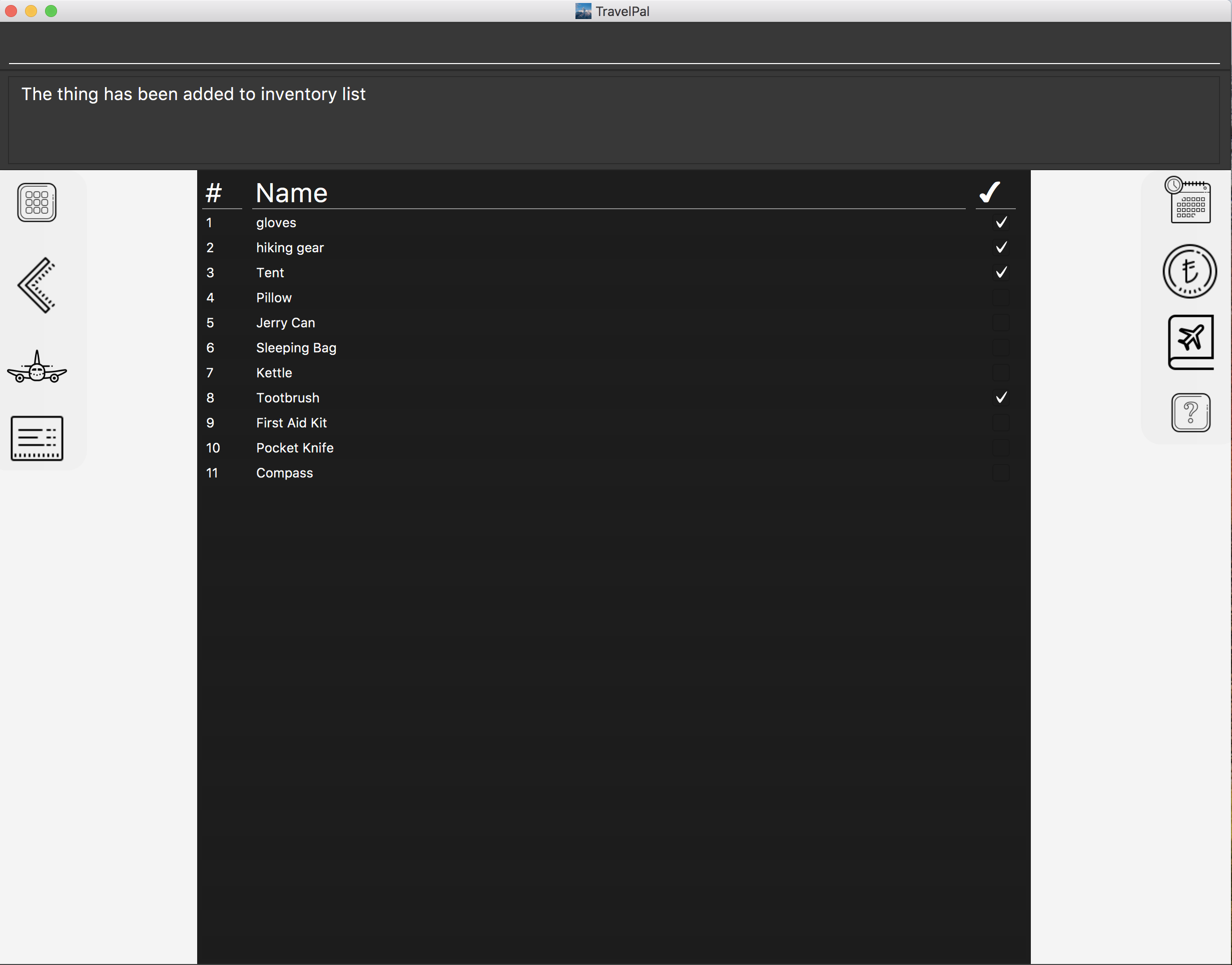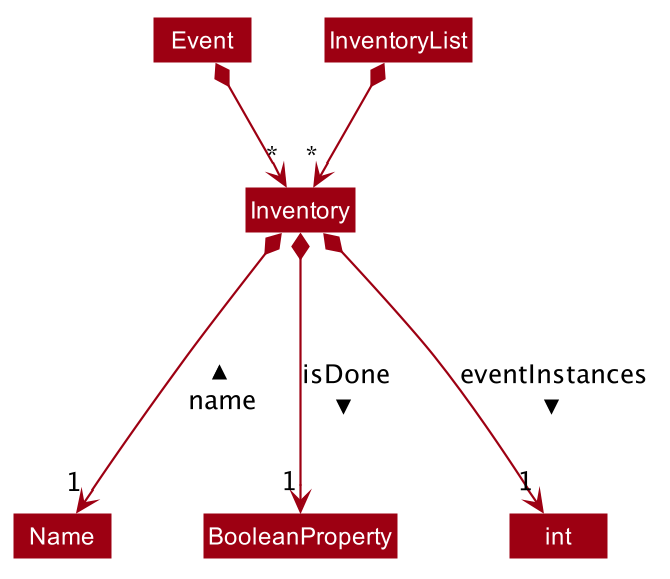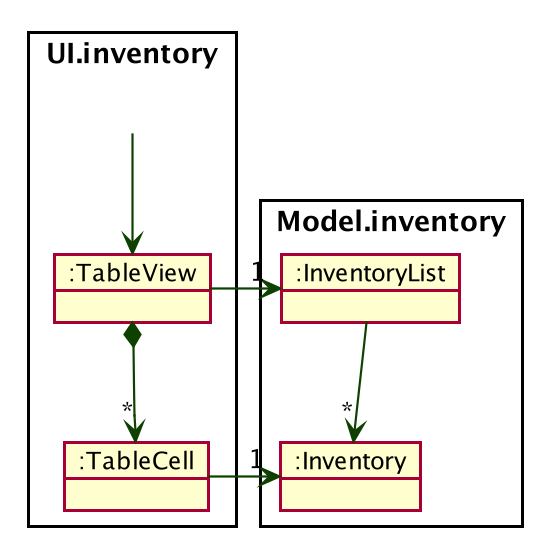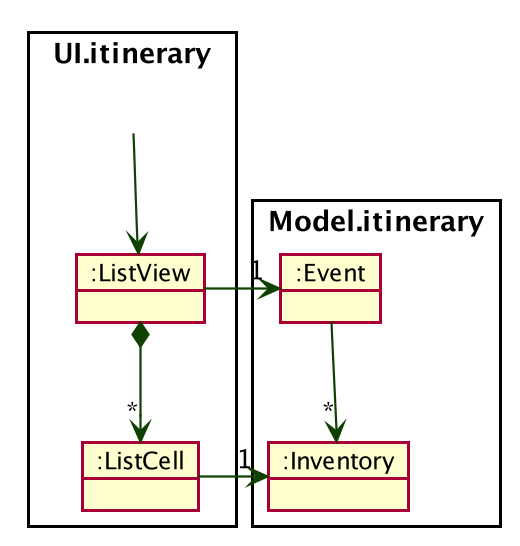About Our Project
This project portfolio page documents my contribution to the team project TravelPal which I undertook along with 4 other computer science students. This application , which is an alteration of another pre-existing basic command line interace desktop addressbook application , is an all-in-one holiday planner that enables travellers to meticulously plan their travels including features like expenditure and inventory managing.
Due to our project requirements, TravelPal is primarily for users who prefer to use a Command Line Interface (CLI), rather than the more traditional way of using a mouse. The display of our application, however, encompasses a Graphical User Interface (GUI) for easy readability and navigability.
Moreover, our project specification defines our target user to be students who are travel enthusiasts.
Summary of contributions
This section details my contribution to the TravelPal application, as well as a summary of my code implementation and the value adddition it has to the project in terms of functionalitiy and usefullness. |
Major enhancements: Implementation of the Trip Inventory Manager feature
-
What it does: The Trip Inventory Manager allows users to create a list of inventory items they need on their trip. Users can choose to manually add a new inventory item or add an inventory item inside of an event in the trip itinerary - which will automatically be reflected on the Trip Inventory List. If the item has already been purhcashed or packed by the user, he is able to mark it using a checkbox.
-
Justification: As it is very common for people to forget things before a trip, this feature prevents them from being forgetful. Moreoever, since the inventory items you store in an event are seen in the Trip Inventory Manager - whenever a user is planning his trip’s events - at the same time he can take a note of the items he would need to bring for the event. Furthermore, since the target users are travel enthusiasits, they are more prone to travel their trips more meitulously - and hence this feature would be a good use case for them.
-
Highlights: This modification requires understanding and interaction of other features such as the event feature since every event stores its own inventory List. Therefore, I had to be mindful to design all my classes with OOP (Object Oriented Programming) principles such as the SOLID principles (mnemonic acronym for five important OOP design principles) to prevent bugs.
-
Credits: I had read the Developer Guide and code of the address book application to modify and implement my features.
Second enhancements: Preventing Duplicate Inventory Items.
One of the most important contributions of mine was in preventing the Travel Inventory Manager from showing any duplicate inventory items.
-
What it does: If the Travel Inventory Manager already contains an inventory with a specific name, the Travel Inventory Manager should not show any duplicates (of the same name).
-
Justification: Having multiplate duplicate inventory items would make the Travel Inventory Manager difficult to read and would make packing difficult. Therefore, this feature was essential to implement to maintain readibility and organization.
-
Highlights: As each event stores an inventory list, the same name could appear in different events (since the events are not supposed to cross check amongst each other). Therefore, I had to spend a lot of time thinking of a workable solution to only delete the inventory item name from the Travel Inventory Manager if no more events had an inventory item of that name in them. I finally thought of a solution which involves keeping count of the number of Events that have a particular inventory item name, for all names in the Travel Inventory Manager.
Other Contributions
-
Code contributed: [RepoSense code][Github pull requests]
-
Idea generation:
-
Contributing in developing some of the main idea of TravelPal (expenses, currency, inventory, events etc.) during the project’s inception. (see travelpal idea generation google docs)
-
-
Enhancements to existing features:
-
Wrote test cases for Inventory Manager
-
Updated the UI to make it more interactive and user friendly #171
-
-
Project management:
-
Reviewed Pull Requests: [My reviews]
-
Updated ContactUs page #16
-
Created first draft and initial layout and plan of the User Guide #17
-
Contributions to the User Guide
This section displays the section of User Guide relating to the usage of the Trip Inventory Manager which was created and edited by me. |
Trip Inventory Manager
Introduction
TravelPal’s Trip Inventory Manager is an integrated inventory planning and management system. It displays all the inventory items required for your trip in an intuitive and simple manner. Thus, making packing for your next trip a super easy task!
There are two types of inventory items:
-
Event-specific inventory items (auto-generated from event)
-
Non-event-specific inventory items
This section of the user guide explains how to view and manage your inventory items using Trip Inventory Manager.
User Interface Overview
Shown below is the Trip Inventory Manager.

The Trip Inventory Manger displays all your event-specific inventory items and non-even-specific inventory items in one table. To provide the best reading experience, Trip Inventory Manger does not display duplicate names.
Commands
On the Trip Inventory Manager page, the following command are available:
-
add <name>: Adds a non-event-specfic inventory item with the name, <name>.
| <name> must not already exist in the Trip Inventory Manger |
-
delete <index of inventory item>: deletes the inventory item
| The inventory item to delete must exclusively be a non-event-specific inventory item. Otherwise, to delete it, you will have to delete the inventory item from all events it is inside. |
-
check <index of inventory item>: marks the inventory item as packed -
uncheck <index of inventory item>: marks the inventory item as not yet packed
| See the user guide for usage scenarios which are not mentioned in this project portfolio page. |
Contributions to the Developer Guide
This section of the Developer Guide titled The Inventory List (which details the its' Models, User Interface and Logic) was created and edited by me. |
[Inventory] The Inventory List
In the application, there can be two types of Inventory Lists:
1. Overall Trip Inventory List
An overall trip inventory list is the inventory list of all the items the user needs for the trip.
Each trip only has one overall trip inventory list.
2. An Event inventory list
An event inventory list is the inventory list of all the items the user needs for the event.
Each trip can have mutiple event inventory lists.
Therefore, in a trip, all the events inventory lists are subsets of one overall trip inventory list.
Aspect : Model

Event, and its contained modelsInventory
The model for an inventory item stored in memory is stored in the Inventory class.
It contains three attributes: the name, isDone and eventOccurances. The name attribute is implemented using a
custom built Name class which ensures that the name is valid. isDone was implemented using a BooleanProperty and indicates
whether the inventory item has been packed. While, eventInstances is an integer which represents the total number of
Event models that have the same inventory item.
Event
Inventory models are contained within an Event, if the corresponding inventory items are part of an event. Event stores
the Inventory models in an ArrayList. Therefore, each Event model contains an Event Inventory List (as defined above).
Since, currently, the application does allow the user to alter the 'isDone' toggle of an Inventory model contained in an event,
the isDone attribute is never set once it is is initialised (as false).
Furthermore, as the eventInstances attribute is only relevant to the Overall Trip Inventory List, the eventInstances
attribute is set as -1.
InventoryList
All unique (by name) Inventory models in any Event model is contained within an InventoryList. It stores the inventory items in a
JavaFX ObservableList. Therefore, the InventoryList contains the Overall Trip Inventory List (as defined above).
An ObservableList was chosen as the user interface requires the changes in the inventory list to be displayed instantly. Furthermore,
isDone was implemented using a BooleanProperty instead of a simple boolean to instantly detect and display changes in any inventory item’s isDone value.
Additionally, an InventoryList can also contain miscellaneous inventory items (not contained in any event).
Aspect : User Interface of Overall Trip Inventory List (with Model InventoryList)
The Overall Trip Inventory List (with Model InventoryList) is displayed in the TableView<Inventory> of the InventoryPage, as seen in the object diagram:

InventoryPage (not shown)The TableView has 3 columns. The first column numbers the items. The second column displays the item’s name. And the thrid column displays whether the item’s isDone property is true or false (through a checkbox).
Both the first and the second column’s cellValueFactory were set to new PropertyValueFactory(STRING) with String STRING. However, the third column was set to CheckBoxTableCell.forTableColumn(BOOLEAN) with Boolean BOOLEAN.
Aspect : User Interface of Event Inventory List (with Model Event)
The Event Inventory List (with Model Event) is displayed in the ListView<Inventory> of the EventPage, as seen in the object diagram:

EventPage (not shown)The ListView uses the CSS styling of resources/view/Inventory/InventoryListViewTheme.css' by calling `listView.getStylesheets().add(CSS_FILE_PATH) with the File Path CSS_FILE_PATH)
Furthermore, the reason why ListView and ListCell are in package Ui.itinerary is because EventPage is in itinerary Ui.itinerary. Similarly, Event is in package Model.itinerary
Aspect : Logic of adding item to Overall Trip Inventory List (with Model InventoryList)

From the sequence diagram, it can be observed that only if InventoryViewParser and AddInventoryParser returns a Command, will
the Command be executed. This ensures the AddCommand is only executed when intended.
Moreover, as seen from the sequence diagram, whenever the AddInventoryCommand is executed, it will always return the InventoryView that
corresponds to the Trip that the user is correctly on - ensuring that there is only one Overall Trip Inventory List.
Furthermore, the InventoryList calls its own internal function of add to add an item to its list - which loops through the entire
list to make sure that the item to be added does not already exist - otherwise it does not add it
. Therefore, this also allows all the items in InventoryList to be unique.
Possible Improvement in Future Release
Currently, both the Event Inventory List and the Overall Trip Inventory List utilise a common Inventory class to store
inventory items.
However, an inventory item in the Event Inventory List does not need to keep count of the eventInstances attribute. Although, the
current solution of setting eventInstances to -1 allows both classes to share the Inventory class, it might not be scalable and
there may lead to bugs in the future.
Therefore, in a future update, it would be rational to remove make the Inventory class an abstract class with just a Name attribute.
And have 2 different classes extend it for the 2 different use cases.
Achievements and Learnings
Development TravelPal has been my first time working with and modifying a pre-existing brown-field software engineering projects. During the process, I have gained a lot practice in programming and in maintaining object oriented principles. This was also my first time using Git and working on a software engineering project as a team. I feel I have improved a lot through this experience, both personally and as a team player.